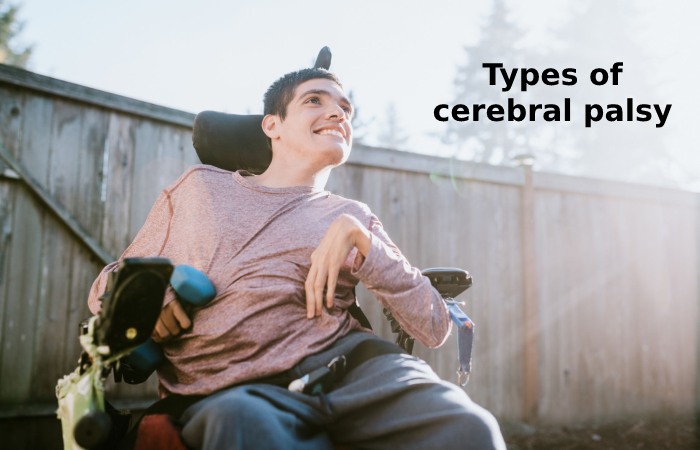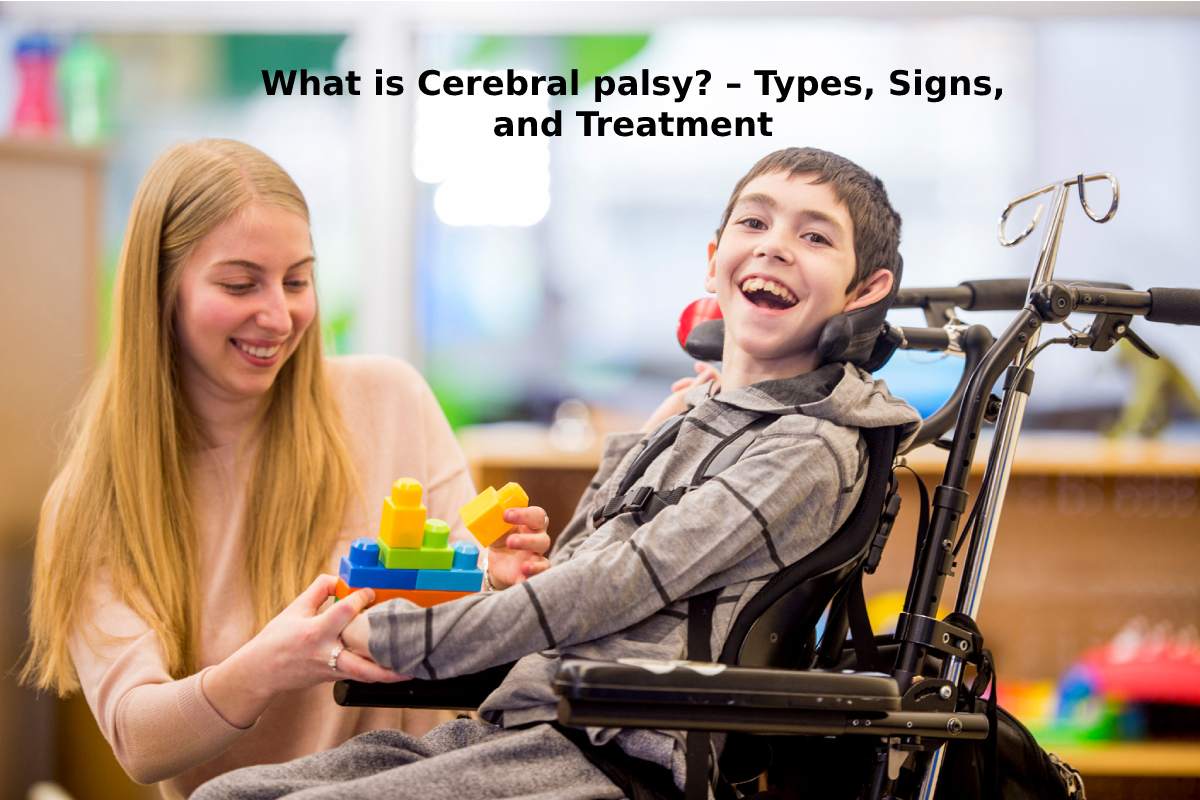Table of Contents
Introduction
Cerebral palsy (CP) is a group of complaints that disturb a person’s ability to move and retain balance and posture. CP is the most mutual motor disability in children. Cerebral means dealing with the brain. Paralysis means weakness or problems using muscles. CP is caused by abnormal brain expansion or damage to the developing brain, affecting a person’s ability to control their powers.
Types of cerebral palsy

Spastic Cerebral Palsy
The most mutual form of it is spastic cerebral palsy. Spastic palsy affects around 80% of persons with cerebral palsy.
People with spastic cerebral palsy have a more significant muscle tone. Also, This means that your muscles are stiff, and therefore your movements may be awkward. Spastic cerebral palsy is frequently described by the body parts affected.
Spastic Diplegia/Paresis
In this form of cerebral palsy, muscle stiffness occurs primarily in the legs, with less or no involvement in the arms. People with spastic diplegia may have difficulty walking because tight hip and leg muscles cause the legs to come together, turn inward, and cross at the knees (also called scissors).
Spastic Hemiplegia/Hemiparesis
This cerebral palsy only disturbs one side of a person’s body; usually, the arm is more affected than the leg.
Spastic tetraplegia/tetraplegia: Spastic tetraplegia is the most severe form of spastic cerebral palsy and affects all four limbs, the trunk, and the face. People with spastic quadriparesis typically cannot walk and often have other developmental disabilities, such as B. intellectual disability, seizures, or problems seeing, hearing, or speaking.
Dyskinetic Cerebral Palsy
People with dyskinetic cerebral palsy have difficulty supervisory the movement of their hands, arms, feet, and legs, which makes it difficult for them to sit and walk. Movements are uncontrollable and may be slow and jerky or fast and jerky. Occasionally the face and tongue are affected, and the person has difficulty sucking, swallowing, and speaking. In addition, a person with dyskinetic palsy has muscle tone that can change (from too tight to too loose) not just daily but even within a single day.
Atactic Cerebral Palsy
People with ataxic palsy have harmed sense of balance and management. They may not be sure to walk. You may have difficulty with quick movements or requiring much control, such as B. Handwriting. They may have trouble controlling their hands or arms when reaching for approximately.
Mixed Cerebral Palsy
Some people have signs of more than one form of it. The most mutual form of mixed cerebral palsy is spastic-dyskinetic palsy.
First Signs of Cerebral Palsy
Signs of palsy vary greatly, as there are many types and levels of disability. However, the main symptom is a delay in reaching motor or motor milestones (such as turning or rolling to one side, sitting, standing, or walking). Here are other possible signs of it. It is important to note that some children may show some of these signs even if they do not have it.
Babies Under 6 Months
- When lifted while lying on their backs, their heads hang back.
- They seem to have a rigid body.
- You seem to have a limp body.
- They stretch their backs and necks excessively when you grip them in your arms as if they’re constantly trying to get away.
- When they stand up, they stiffen and cross their legs.
Babies Older than 6 Months
- They don’t turn or roll to one side or the other.
- You can’t hold hands.
- They find it difficult to put their hands to their mouths.
- You stretch out one hand to grab things and hold the other fist.
Treatment and Intervention Services of Cerebral Palsy
There is no medicine for it, but treatment can improve the lives of those affected. Therefore, starting a treatment program as soon as possible is essential.
Once the diagnosis is made, a team of health professionals works with the child and her family to create a plan to help the child reach her full potential. Common treatments include medications, surgery, braces, and physical, occupational, and speech therapy. Unfortunately, no single treatment is best for all children with palsy. Before deciding on a treatment plan, you must talk with your child’s doctor to understand all the risks and benefits.
Causes and Risk Factors
It is caused by abnormal brain development or damage to the developing brain that affects a child’s ability to control their muscles. There are numerous possible causes of abnormal growth or damage to the brain. First, it was thought that the leading cause was a lack of oxygen during childbirth. But now, scientists believe it only causes a small number of cases.

